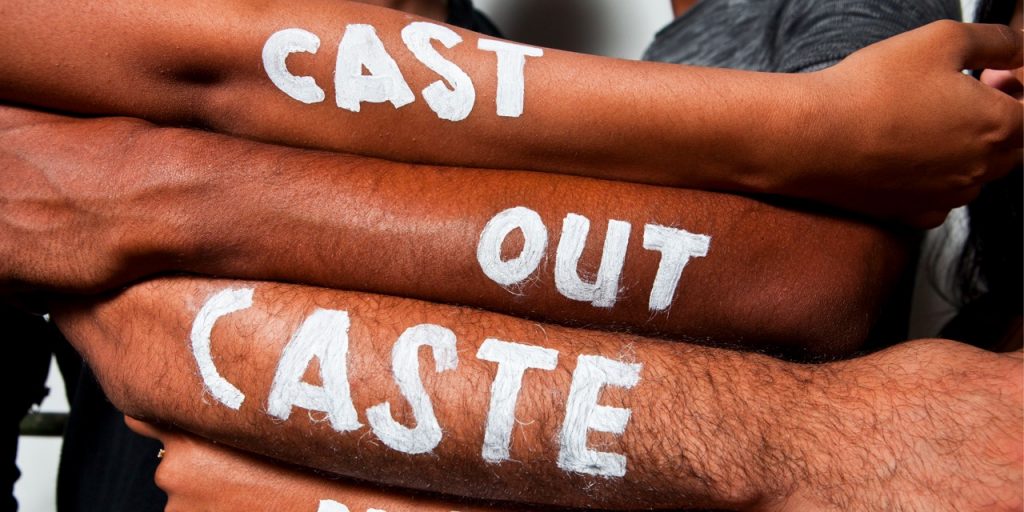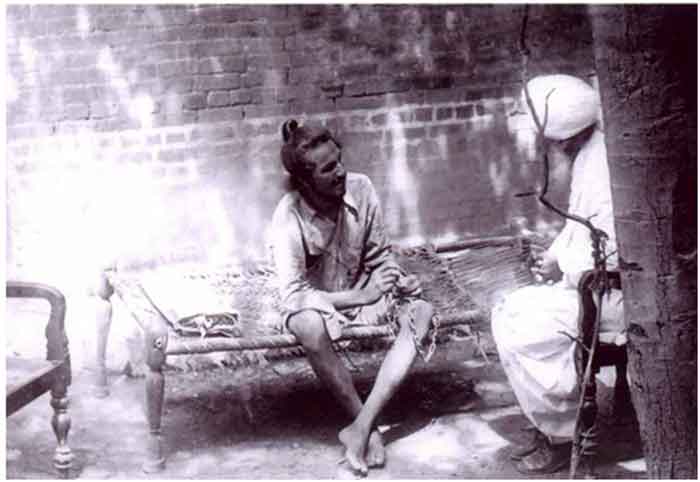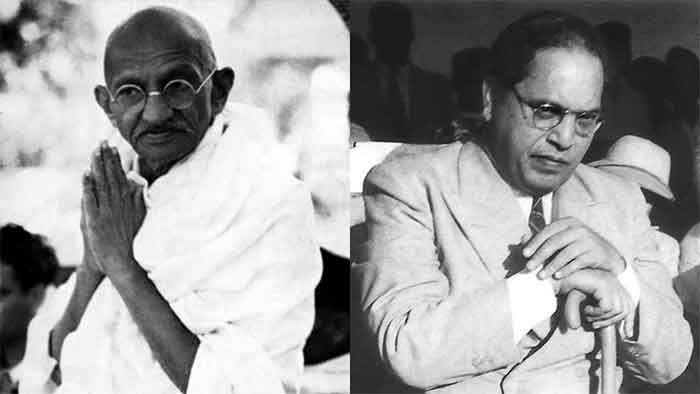
Caste is not entirely the same as Race, yet Casteism and Racism remain blood brothers. They are both systems of structured oppression which date back centuries. While Racism surfaced back as a white knee crushing a black neck that belonged to a man called George Floyd who lost his life minutes after, clearly a case of murder in broad daylight, a Brahmin priest in Orissa, India hacked a man to death from inside a temple as a sacrifice to ward of COVID-19. Half the population of America took to the streets. For India, this is just another news column to shake one’s head about. While the police made remarks about the priest being mentally unstable, the invisible hand that is Caste which is spread over like a blanket over India’s scattered population remains unseen. From the suicide of Dalit scholar Rohith Vemula of Hyderabad Central University to the suicide of a class 10 Dalit student Devika from Kerala, news reports still refuse to even use the word “Dalit” or to confront the question of caste while mentioning these cases of institutional murders.
Both Racism and Casteism are strong and similar systems of social subjugation and a number of parallels can be drawn from each other. Dalits relate to the systemic oppression undergone everyday by the Blacks more than any other group, and get inspired from them to fight against the same. The rise of the Dalit Panthers is one example of this inspiration, which is drawn on the legacy of the Black Panther movement. Jotiba Phule was also one of the first reformers who identified the similarity between the caste system and racism. Phule dedicates his book, ‘Gulaamgiri’ (Slavery) to the American abolitionists, and writes in the opening pages— “in an earnest desire that my countrymen may take their example as their guide in the emancipation of their Sudra Brethren from the trammels of Brahmin thralldom”.
History of Racism in the U.S is almost 300 years old dating back to the transatlantic slave trade that had millions of Africans from Central and West Africa transported across the continent in large cargo ships, a number that was more than it could house, by cramming and chaining them, and eventually dumping overboard those bodies which couldn’t survive the wretched, two-month long journey, battling dehydration, disease, starvation and abuse.
Frederick Douglass, American social reformer and writer, born into slavery, and later emerging as one of the first reformers of the Christian religion, says in his What to the Slave is the Fourth of July, addressing a large audience, “Fellow-citizens, pardon me, allow me to ask, why am I called upon to speak here to-day? What have I, or those I represent, to do with your national independence? Are the great principles of political freedom and of natural justice, embodied in that Declaration of Independence, extended to us?”. The further the speech goes, Douglass makes clear to his audience the distance between the platform he is standing in and the slave plantation from which he has escaped, and as opposed to the deliberate inclusion of blacks into the nationalist framework of America by the whites, puts forth a picture of the enormous distance between the people of his race and the celebration of the 4th of July by the American people.
Comparisons cannot be but drawn to Dr. B.R Ambedkar’s opening statement in his undelivered speech, Annihilation of Caste, in which he writes “Introduction—why I am an unlikely President
for the Conference”. Although unlike Douglass, Ambedkar is addressing a conference on the social reformation of Hinduism held by the Jat-Pat-Todak Mandal, who did not differ much from their progeny, the Arya Samaj, he clearly elucidates in his speech the distance between his cause and theirs, as he addresses a large savarna audience. While Douglass argues for the deconstruction of the accepted nationalist narrative of the white man that forcefully includes both whites and blacks (to be equal) in their imagination of America, Ambedkar does the same by placing the the savarna and the avarna within the framework of the Hindu society, which takes the place of a liberatory and inherently spiritual religion in the imagination of caste-Hindu “reformers”.
Ambedkar, in all his ferocity, writes, “The Mandal may be asked to explain why it has disobeyed the Shastric injunction in selecting the President. According to the Shastras, the Brahmin is appointed to be the Guru for the three Varnas, is a direction of the Shastras. The Mandal therefore knows from whom a Hindu should take his lessons and from whom he should not.” The classic paradox that lies in Hinduism is placed here by Ambedkar as he attacks the morality upheld by the Mandal which is, despite their pro inter-dining and inter-marriage stance and disagreement with untouchability, intertwined within the morals and regulations laid down as said in the Hindu scriptures. Unlike Ambedkar’s argument against the fact that the Hindu society itself is a myth which is made up of a collection of castes and sub-castes, in which underlies the fabric of his famous quote, “Hinduism is a veritable chamber of horrors”, Douglass focuses on the liberatory potential of Christianity by way of religious reform. He grabs hold of religion from the hands of the oppressor, and holds the system of the church accountable. In a speech titled the “The Church Responsible”, Douglass writes, “Many of its most eloquent Divines, who stand as the very lights of the church, have shamelessly given the sanction of religion and the Bible to the whole slave system. They have taught that man may, properly, be a slave; that the relation of master and slave is ordained of God; that to send back an escaped bondman to his master is clearly the duty of all the followers of the Lord Jesus Christ; and this horrible blasphemy is palmed upon the world for Christianity”. Douglass believes that religion was the apparatus on which was built the structure of social hierarchy driven by fear, subservience and most importantly, blind faith. “In this confrontation, Douglass’s liberation theology shakes the foundation of one of the primary undergirding social, political and economic structures of nineteenth century American culture— the white Christian Churches”.
Hinduism also has undergone many attempts of religious reformations in the past with movements like Brahmo Samaj and Arya Samaj in which the latter upheld and believed in the infallibility of the Vedas while trying to derive a monotheistic mode of worship from it, along with the objective of obliterating the hereditary system of caste from its praxis. This is where Casteism differs from Racism in its natural framework, yet remaining the same within its oppressive structure. While racism, although once sanctioned by [the interpretation of] Christianity, still has its roots in race, the framework of the Hindu problem of caste is built entirely on its sanction of the Hindu sacred texts, as opposed to how it may be viewed by an outsider; that is, if it can be viewed by an outsider at all.
While race may be the biological construct the white man bases his superiority on, both races are distinguishable to an outsider because of physical attributes such as the skin, the hair and other physical features. In the case of the Indian sub-continent, this is not the case. The caste-Hindu argument (which is used to glorify the purity of the Brahmin “race”), which has been defended by many scholars and scientists until lately is that: caste is the same as race, and the Aryan- invasion theory is the justification that follows it. Ambedkar confronts this argument,“As a matter of fact [the] Caste system came into being long after the different races of India had commingled in blood and culture. To hold that distinctions of castes are really distinctions of race, and to treat different castes as though they were so many different races, is a gross perversion of facts…”.
If there is no race question shrouded under the disguise of “Hinduism”, why is the horrific caste system, after 3000 long years, left unscathed in the Indian sub-continent?
Mahatma Jotiba Phule, one of the first anti-caste, Shudra reformers, tells us about the infusion of myth and folklore into the Hindu sacred texts in the context of the Aryan-invasion. Even though Ambedkar debunks the Aryan-invasion theory, his book “Who Were The Shudras”, which does so, is dedicated to the Mahatma himself. Phule in his “Slavery” writes, “They originally settled on the banks of the Ganges whence they gradually spread over the whole of India. In order, however, to keep a better hold on the people they devised that weird system of mythology, the ordination of caste, and the code of cruel and inhuman laws, to which we can find no parallel amongst other nations. They founded a system of priestcraft so galling in its tendency and operation, the like which we can hardly find anywhere since the times of the Druids”. This methodology that Phule mentions, of using mythology and priestcraft to have a better hold over the cultures of the aboriginal people, and fabricating entirely exaggerated legends to instil a religious belief in them to sanction the system of caste and to worship upper-caste gods, created a society whereby upper-caste culture flourished in itself. Prayers, hymns and poetry were written in praise of these “gods”. Rituals and sacrifices, and festivals were celebrated to glorify these gods. Literature and every other art-form came to be produced with manufactured Brahmanical culture strongly embedded in it. Even Ambedkar in his “Ancient India on Exhumation” and “Revolution and Counter Revolution in India” explains in detail how the texts, namely the Manusmriti, Gita, Puranas, Mahabharata and Ramayana were written as counter-revolutionary theology after the victory of Brahmanism over the Buddhist Mauryan Empire and how “the transformation of Varna into Caste was the most stupendous and selfish task in which Brahminism became primarily engaged in, after its victory”. The current India is the living proof as to what extent a cultural hegemony of the Brahmins and a religion-sanctioned caste system succeeded in destroying the lives of the Indian people.
While the condition of Racism in America remains evident due to the existence of different races, the unjust system and structural oppression become comprehensible to an outsider. Christianity had within it a potential for a liberatory theological reading. Caste, having done its job of hiding well behind a veil of religion, and having no specific distinction to distinguish one caste from another (as the idea of caste itself is a social construct and does not exist), one falls into the brahmanical “priestcraft” that holds sway even an outsider with a charming disguise of Yoga, Ahimsa, Spirituality and Vegetarianism.
Casteism and Racism remain blood brothers that keep the engine of structural social hierarchy running in both societies. Victims of both would be able to speak the same language to each other because of the lives they’ve lived, the space they were forced to occupy in society, and the stubborn social tag that follows them no matter which end of the world they escape to. Yet, for the Indian people, fighting against an invisible enemy that has no specific form is much harder than the fight against racism in the U.S. While being largely inspired by the Black movement, the similar tools used by them in their fight to liberation would not prove to be an effective weapon in the hands of the bahujan population of India. There is a strong, and necessary need to revise the formulation of theories and strategy in which we confront the monster of caste.
We are 3000 years ahead of caste in counting, five decades ahead of reservation, yet Ambedkar’s words remain etched in the darkest ink on every mind that has realised the dangers of caste in India— “Turn in any direction you like, caste is the monster that crosses your path”.
Izza Ahsan is a student of Jamia Millia Islamia
SIGN UP FOR COUNTERCURRENTS DAILY NEWSLETTER















































